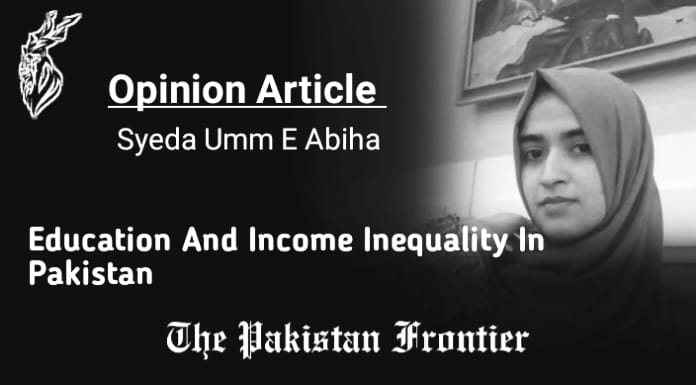Quality Education and Reduced Inequalities, are two of the important goals of the Sustainable Development Goals (SDGs). Education is the basic right of every individual and in the ever advancing world, education is necessary for everyone to participate in the race. However, when we particularly look at the case of Pakistan, we can get more understanding of the relationship between education and income inequality.
In this article, we will discuss the education, income and the factors leading to the inequalities on various level. The factors cover a range of causes e.g. ethnic traditions, lack of opportunities, political, social aspects, the economic system (capitalism), and lack of other resources.
Education, in Pakistan is one of the challenging factor because of lack of the resources and the diverse culture, which spreads from north to south of the country. The diverse culture presents challenges of it own, ranging from conservative mindsets to traditional values which often creates hurdle between the road leading to the advance education and bright futures. Pakistan consists of variety of ethnicities, and each of them have unique character.
Education is a way forward to modern studies, development and progress which is directly related to the income opportunities present in the markets.
Education helps you to understand the contemporary trends, requirements and needs of the modernising world, it is challenging and accommodating at the same time. It polishes the skills and improves the problem solving abilities of a person.Income inequality is created because of the unequal distribution of resources. Other reasons leading to the income inequality in Pakistan are the historical racism, economic, social and political factors, discrimination on various levels i.e gender, ethnicity, religion and class, etc.
To understand the class system, we can take help of the Marxist theory, which explains the split between the capitalist society, the two classes i.e. proletariat and bourgeoisie. Proletariat is the working class of the society, whereas bourgeoisie controls the means of production and wealth in the society.
Now in case of Pakistan, a rough estimate suggests that top 10% of the population earns at least 27.6% and the bottom 10% earns only 4.1% of the income. This ratio shows a huge income inequality which is the result of lack to no educational opportunities. Now bringing all these factors into account we can decipher the conditions to help us compare the relationship between education and income inequality in the Pakistani society. We start to connect the dots from the very prime institution i.e. the family system, which varies from culture to culture, but in context of traditional attitudes and conservative mindsets, they share a common character, of not letting their generations expose to advance studies irrespective of their genders, while there are also some people who prefer spending on their male population than the female, because they are and will be the breadwinners in the future.
Whereas, the girls are typically sent to the local schools, and are allowed to study until the primary classes or sometimes middle school. The difference is created from this very step, the gender discrimination. Moving further, the traditional cultures emphasize on skilfulness rather getting the academic education only.Moving out of the rural cultural landscapes, into the urban setting, we see another face of class difference, ranging from mediocre to elite settings. The middle class struggles to cover their educational journey into the public institutions and the rich class in the elite, which also includes the foreign institutions. The higher the value of the institution, the higher would be the chance of a future full of opportunities and chances to early success and vice versa.
This difference which is created during the high school education than leads to the inequality in the job market. The one possessing degrees from the elite institutions are welcomed into the industries whereas the other keeps on struggling in the common office culture with less income. This income inequality is due to the lack of jobs, investment and economic stability in the country, which ends up in uneven distribution of the resources. The private culture thrives due to investment opportunities and reforms according to the ever changing economic trends, whereas the public sector continues to survive on the brink of bankruptcy.
In recent years, we have seen this culture of privatisation of the public/state assets, just because either the state was not able to gain remarkable profit or its performance was in negative. The above factors can help us understand the comparison of the education and income inequality, and the other associated factors which play their parts in the changing trends.
We can conclude that both education and income inequality and in a reverse relationship with one another, the higher the quality education with no discrimination, the less would be the income inequalities faced by the working class. The quality education would lead to equal opportunities and a promising future for everybody alike.
The author is a journalism intern at The Pakistan Frontier.
